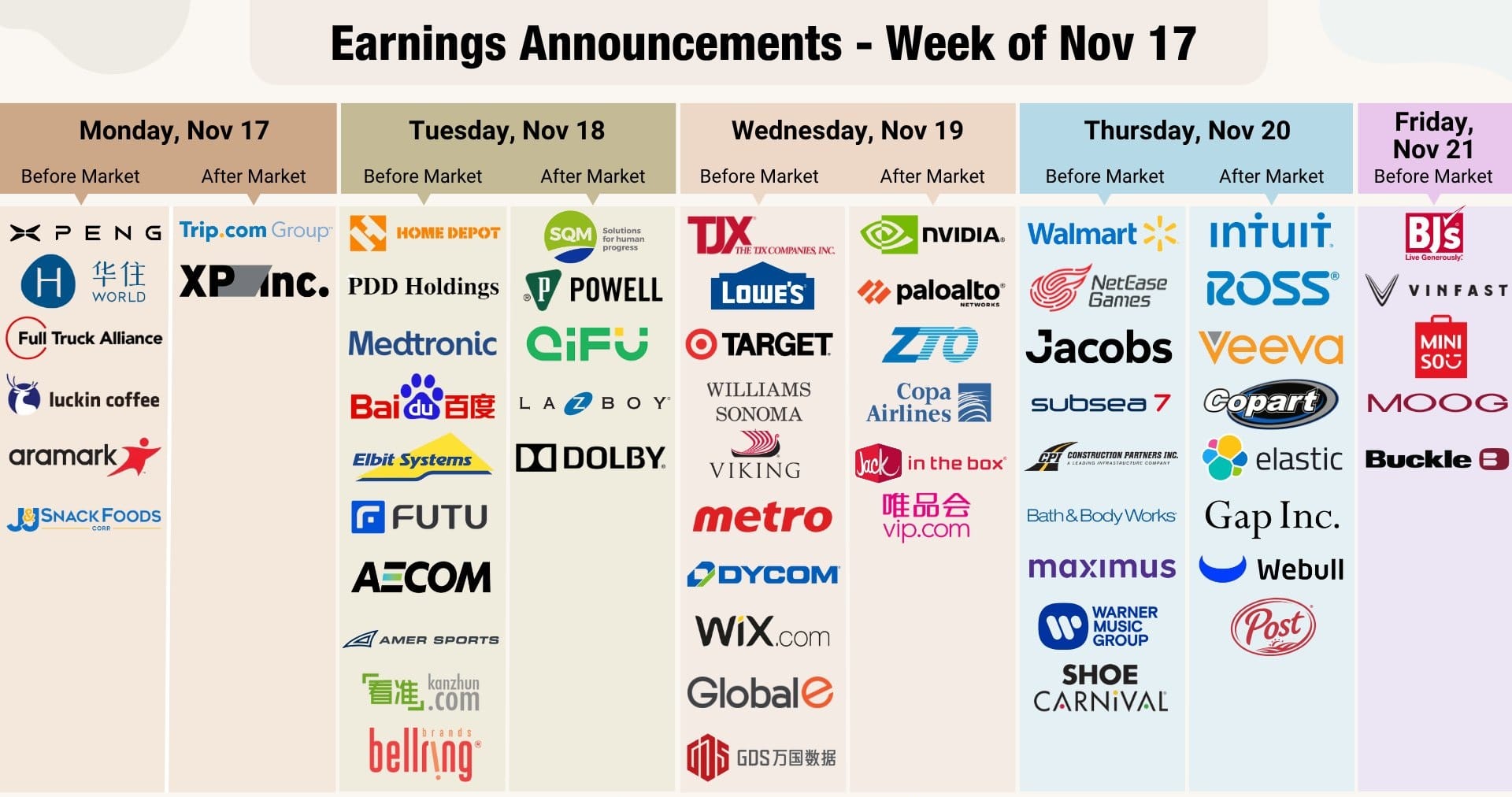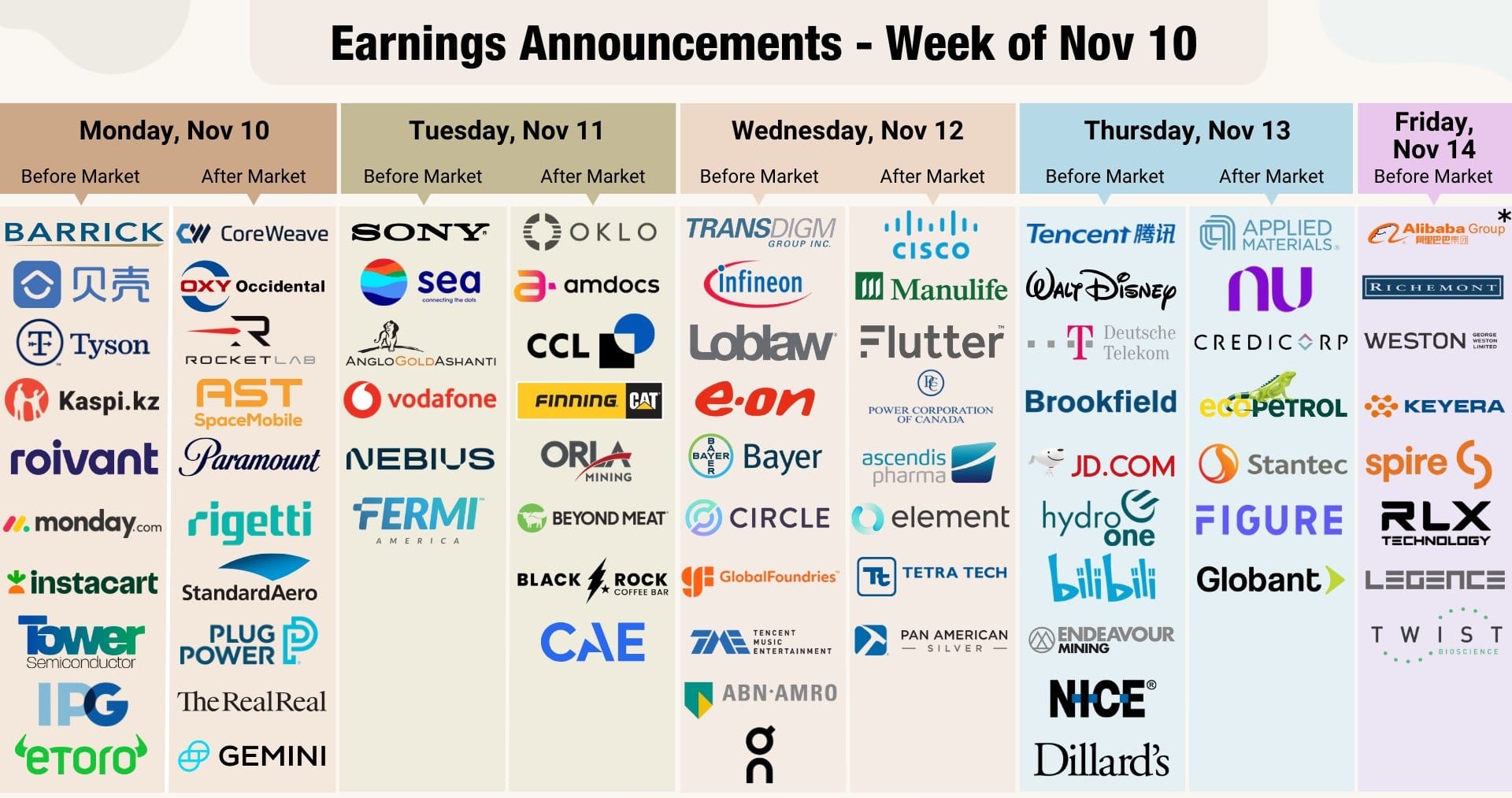North America News
US Stock Markets Tumble as NASDAQ Drops Nearly 2%
U.S. equities slumped on Thursday, erasing previous gains as concerns over tariffs and global economic uncertainty rattled investors. The NASDAQ led the decline, falling 1.96%, while the S&P 500 slipped into correction territory, now down 10.18% from its all-time high.
Key Market Performance:
- Dow Jones Industrial Average: -537.12 points (-1.30%) to 40,813.81
- S&P 500 Index: -77.81 points (-1.39%) to 5,521.49
- NASDAQ Composite: -345.44 points (-1.96%) to 17,303.01
- Russell 2000 Index: -32.77 points (-1.62%) to 1,993.69
For the week, the major indices are on track for their worst performance since September 2024:
- Dow Jones: -4.64%
- S&P 500: -4.31%
- NASDAQ: -4.91%
US Treasury Sells $22 Billion in 30-Year Bonds at 4.623% Yield
The U.S. Treasury auctioned $22 billion in 30-year bonds at a high yield of 4.623%, slightly above the 4.612% when-issued (WI) level at the time of bidding.
Key auction results:
- Tail: 1.1 basis points (vs. six-month average of -0.1 basis points).
- Bid-to-cover ratio: 2.37x (vs. six-month average of 2.46x).
- Direct bidders: 22.7% (vs. six-month average of 18.7%).
- Indirect bidders (international demand): 60.5% (vs. six-month average of 68.4%).
With international demand weaker than usual, the auction was underwhelming, though 30-year yields remain slightly lower at 4.616%.
Core PCE Inflation Projected to Rise to 2.8% Year-Over-Year
Pantheon Macroeconomics expects the core Personal Consumption Expenditures (PCE) index to rise to 2.8% year-over-year in February, up from 2.6%. Month-over-month, core PCE is projected to increase by 0.36%.
Goldman Sachs offers a slightly lower forecast:
- Core PCE up 0.29% month-over-month.
- Core PCE up 2.7% year-over-year.
- Headline PCE up 0.26% month-over-month and 2.45% year-over-year.
These projections indicate persistent inflationary pressures, which could influence Federal Reserve policy decisions.
US Producer Prices Remain Flat in February
The U.S. Producer Price Index (PPI) for February remained unchanged month-over-month (0.0%), falling short of the expected 0.3% increase. On a year-over-year basis, PPI rose 3.2%, slightly below the forecasted 3.3%.
Key details:
- Core PPI (excluding food and energy) declined 0.1% month-over-month, missing the 0.3% estimate.
- Year-over-year core PPI increased 3.4%, just below the 3.5% projection.
- A 53.6% surge in egg prices drove much of the increase in goods, while gasoline prices dropped 4.7%.
- The final demand services index fell 0.2%, the largest decline since July 2024.

The report suggests a mixed inflation outlook, with early indicators pointing to a 0.2% increase in the Personal Consumption Expenditures (PCE) index.
US Weekly Jobless Claims at 220K

Initial U.S. jobless claims came in at 220,000, slightly below the 225,000 estimate. The prior week’s figure was revised upward from 221,000 to 222,000.
Additional data:
- The four-week moving average rose to 226,000 from 224,500.
- Continuing claims fell to 1.87 million, below the 1.90 million forecast.
The figures suggest continued labor market stability, with no significant signs of job losses.

Treasury Secretary Bessent: Trump Administration Focused on ‘Real Economy’
U.S. Treasury Secretary Bessent, speaking on CNBC, emphasized the administration’s commitment to long-term economic stability rather than short-term market fluctuations.
Key remarks:
- A government shutdown would be disruptive, but Democrats would “own it.”
- Trump’s 200% tariff threats are not seen as a major issue, with everything besides metals and key orders still negotiable.
- Surplus countries will bear the biggest burden if trade tensions escalate.
- The administration aims to control government spending, arguing that the U.S. has a spending problem rather than a revenue problem.
- While interest rates could decline, the U.S. economy may see unexpected growth in Europe and stabilization in China.
US Commerce Secretary Lutnick: Steel and Aluminum Essential for National Security
In a Fox News interview, Commerce Secretary Lutnick defended U.S. trade policy, stating that steel and aluminum are critical for national security.
Key takeaways:
- The administration seeks to balance trade by prioritizing domestic production of semiconductors, pharmaceuticals, steel, and aluminum.
- President Trump will outline his trade strategy on April 2.
- Mexico and the UK have taken a “pragmatic” approach to tariffs, while the EU and Canada have not.
- Lutnick plans to discuss trade issues with EU officials later today.
Barclays Now Expects Two Fed Rate Cuts in 2025
Barclays has revised its U.S. interest rate forecast, now predicting two Federal Reserve rate cuts in 2025—one in June and another in September. Previously, the bank had only anticipated a single rate cut in June.
This shift aligns with evolving market expectations, as traders now price in approximately 70 basis points of Fed rate cuts for the year, reflecting heightened economic uncertainty.
Michelle Bowman Named Federal Reserve Vice Chair for Supervision
Federal Reserve Board Governor Michelle Bowman has been appointed as the new Vice Chair for Supervision, replacing Michael Barr. The Financial Times first reported the decision, highlighting Bowman’s previous dissent against the Federal Open Market Committee’s (FOMC) 50-basis-point rate cut in September 2024. Her appointment could signal a more conservative approach to financial regulation within the central bank.
Ontario Premier Ford Seeks Constructive Meeting with US Commerce Secretary
Ontario Premier Doug Ford expressed his intent to have a productive discussion with U.S. Commerce Secretary Lutnick following recent tensions over electricity surcharges and tariffs on Canadian steel and aluminum.
Meanwhile, President Trump met with General Motors CEO on Wednesday, reportedly to discuss the automaker’s investment strategy, which could include scaling back operations in Canada.
TD Forecasts Bank of Canada Rate Cut to 2.25% by June
Toronto-Dominion Bank expects the Bank of Canada (BoC) to cut its benchmark interest rate to 2.25% by June, citing the economic strain of rising tariffs. TD analysts view the central bank’s latest rate cut as a protective measure against mounting economic risks, particularly as tariffs on Canadian exports surge to an estimated 12.5%—a sharp increase from previous levels below 2%.
While recent economic indicators suggest resilience, TD anticipates a shallow recession as trade tensions intensify. The BoC is expected to maintain a dovish stance, though the scope for further rate cuts remains limited due to ongoing inflation concerns.
Canada Seeks USMCA Consultations Over Steel and Aluminum Tariffs
Canada’s Minister of Export Promotion, International Trade, and Economic Development, Mary Ng, has announced that Canada is formally requesting consultations with the United States over tariffs on steel and aluminum. According to Ng, these tariffs violate the United States’ commitments under the USMCA trade agreement. The move signals escalating trade tensions between the two countries, with Canada seeking to uphold its rights under the deal.
Mark Carney to Be Sworn in as Canada’s Prime Minister on Friday
Prime Minister-designate Mark Carney and his cabinet will be sworn in on Friday, according to a CBC report. Carney is widely expected to call a federal election shortly after taking office, possibly by the end of the month, with a campaign period lasting six to eight weeks.
Recent polling suggests a dramatically tightened race, with the once-dominant Conservative lead evaporating, setting the stage for a highly competitive election.
Commodities News
Silver Eyes Breakout Above $33.40 Amid Cooling Inflation and Trade War Fears
Silver is edging closer to the key resistance level of $33.40, supported by softer-than-expected U.S. inflation data and heightened safe-haven demand amid escalating trade tensions.
The U.S. Producer Price Index (PPI) and Consumer Price Index (CPI) for February both came in below expectations, reinforcing market bets on a Federal Reserve rate cut in June. Fed Chair Jerome Powell has previously suggested that monetary policy could ease sooner if inflation continues to cool or if labor market conditions weaken. Lower interest rates would boost silver’s appeal as a non-yielding asset.
On the geopolitical front, concerns over a potential U.S.-EU trade war have further strengthened silver’s safe-haven appeal. President Donald Trump recently confirmed his intention to retaliate against European counter-tariffs, increasing market uncertainty.
Technical Outlook
Silver is testing the upper boundary of an Ascending Triangle pattern, with key support at the 20-day Exponential Moving Average (EMA) near $32.30. The Relative Strength Index (RSI) has climbed above 60, signaling growing bullish momentum.
A sustained move above $33.40 could set the stage for a test of the October 2022 high at $34.87, while downside support remains at the psychological $30.00 level.
Gas Traders Reduce Net Long Positions in Natural Gas – ING
Investment funds continued to scale back their net long positions in natural gas, marking their smallest net long position in the Title Transfer Facility (TTF) since May 2024, according to ING analysts Ewa Manthey and Warren Patterson.
Over the past week, funds sold 48.1 terawatt-hours (TWh), bringing their net long holdings down to 126.7 TWh. The decline was driven primarily by an increase in fresh short positions rather than long liquidations. This shift suggests growing bearish sentiment in the natural gas market.

US Crude Oil Futures Settle at $66.55, Down 1.67%
Crude oil futures declined by $1.13 (-1.67%), settling at $66.55 per barrel. Prices ranged from a low of $66.40 to a high of $67.91.
The International Energy Agency (IEA) projects global oil demand to rise by 1 million barrels per day (bpd) in 2025, up from 0.83 million bpd in 2024. However, supply is expected to exceed demand by 0.6 million bpd as OPEC+ restores 2.2 million bpd of previously cut production and North and South American output increases.
While ongoing trade tensions and new tariffs pose economic risks, market optimism is bolstered by expectations of three Federal Reserve rate cuts this year, which could stimulate demand.
IEA Lowers Global Oil Demand Forecast, Predicts Market Surplus
The International Energy Agency (IEA) reduced its global oil demand growth forecast for 2025 to 1.03 million barrels per day (bpd), down from 1.10 million bpd. The agency anticipates a surplus of approximately 600,000 bpd, which could expand by an additional 400,000 bpd if OPEC+ delays unwinding its output cuts.
The IEA attributed weaker-than-expected first-quarter demand to macroeconomic uncertainty and U.S. tariffs, which have heightened downside risks.
Gold Hits New Record Highs, Approaching $3,000
Gold continues its rally, reaching an all-time high of $2,966.19—just $34 short of the psychologically significant $3,000 level. Central banks remain key buyers, with Poland announcing its gold reserves have reached 480 tons, nearing its 500-ton target.
CERAWeek: US Oil Production Nearing Peak, Industry Leaders Warn
At the annual CERAWeek energy conference, major industry figures including Harold Hamm (Continental Resources), Vicki Hollub (Occidental Petroleum), and Scott Sheffield (Pioneer Natural Resources) warned that U.S. oil production is approaching its peak. Despite White House rhetoric promoting increased drilling, executives emphasized that the most accessible resources have already been extracted.
Hamm noted that U.S. output is plateauing, while Hollub projected a production peak between 2027 and 2030. Sheffield, whose company was acquired by Exxon in 2023, cautioned that the industry is running out of high-quality reserves, with Tier 1 inventory expected to be depleted by 2028 and Tier 2 by 2032.
Europe News
Eurozone Industrial Production Surges in January
Eurostat reported that Eurozone industrial production rose by 0.8% in January, surpassing the expected 0.6% increase. The positive result came alongside an upward revision of December’s figures from -1.1% to -0.4%, signaling a stronger-than-expected rebound.
The growth was primarily driven by a 1.6% increase in intermediate goods and a 0.5% rise in capital goods, offsetting declines in energy (-1.2%), durable consumer goods (-0.2%), and non-durable consumer goods (-3.1%).

Germany’s Economy Expected to Stagnate in 2025, but Growth Forecast Rises for 2026
The IfW Kiel Institute maintains its forecast that Germany’s economy will stagnate in 2025, showing no change from previous projections. However, growth expectations for 2026 have been revised upward to 1.5% from the previous 0.9% estimate. This adjustment reflects anticipation of increased government spending, particularly in defense and infrastructure, under new fiscal policies.
Switzerland’s Producer and Import Prices Rise in February
Switzerland’s producer and import prices increased by 0.3% month-over-month in February, exceeding the previous month’s 0.1% gain. The latest data from the Swiss Federal Statistics Office suggests continued inflationary pressures in the country’s production and trade sectors.
UK Housing Market Cools as RICS Survey Falls Below Expectations
The latest Royal Institution of Chartered Surveyors (RICS) housing survey shows a sharp decline in market sentiment, with February’s balance falling to +11—significantly below the expected +20.
This marks the lowest reading since September, while homebuyer demand has fallen to its weakest level since November 2023. The slowdown suggests growing caution in the UK housing market amid economic uncertainty.
France Stands Firm Against US Tariff Threats on Wine and Spirits
French Overseas Trade Minister Laurent declared that France will not yield to threats from the U.S. regarding proposed 200% tariffs on European wine, champagne, and spirits. He emphasized that France will work alongside the European Commission and international partners to protect its industries from punitive trade measures.
ECB’s Rehn Advocates for Negotiated Solution to US Tariffs
European Central Bank policymaker Olli Rehn urged the U.S. to seek diplomatic solutions rather than impose harmful tariffs. His remarks reflect growing concerns within the ECB over trade disruptions and their impact on the European economy.
ECB’s Nagel: US Tariffs Could Push Germany Into Recession
Bundesbank President Joachim Nagel warned that U.S. tariffs could trigger a third consecutive year of economic contraction for Germany, marking an unprecedented downturn since reunification in 1990. While Germany’s debt brake reform and planned infrastructure investments could provide economic support, the country remains at risk if trade tensions escalate.
Germany’s Merz: We have carried out good talks with Greens on financial package
- Remarks by incoming German chancellor, Friedrich Merz
- We have changed proposal on infrastructure to also include climate protection measures
- Propose to meet demands to expand scope of defence to include civil defence, intelligence funding
Germany’s Greens party official says there is no rapprochement in talks so far
- The pushback continues in the first day of negotiations
The Greens are maintaining that they have no real signs of progression in talks with the CDU/CSU and SPD for now. Adding that the party will continue to reject the draft legislation on the incoming government’s debt plans.
Asia-Pacific & World News
PBOC Signals Rate Cuts and Reserve Requirement Reduction
China’s central bank, the People’s Bank of China (PBOC), announced that it will cut interest rates and the reserve requirement ratio (RRR) at an appropriate time to maintain ample liquidity. Additionally, the PBOC intends to guide social financing costs lower while ensuring the yuan remains stable within a reasonable range.
Putin: Would agree to stop fighting in Ukraine, but should lead to long-standing peace
- Putin is willing to halt fighting in Ukraine to pave way for enduring peace, but there are contigencies, and clarifications
- “Welcome” to those companies which want to return to Russia.
- Return of Western companies could be beneficial for everyone.
- We are in talks about such return. (Referring to Western companies returning to Russia)
- Thanks Trump for attention to Russia-Ukraine conflict.
- We agree to stop fighting in Ukraine, but it should lead to long-standing peace.
- Ceasefire has to eliminate root causes of the conflict.
- Situation in Kursk region is fully under Russian control
- Ukrainian troops are in full isolation in Kursk
- For Ukraine it will be good to reach 30 days cease-fire in such circumstances
- There are two options for Ukrainians in Kursk – die or be captured
- if there is cease-fire, it’s not clear how situation will develop in Kursk and elsewhere
- Why do they need 30 days of cease-fire, for mobilization or weapon supplies to Ukraine.
- There are a lot of questions about cease-fire.
- Who will control cease-fire, the front is 2000 km long.
- Cease-fire itself is right, and we will support it, but there are questions to be discussed
- Maybe me and Trump hold a phone call
- If US and Russia agree on energy cooperation, then gas pipeline for Europe could be provided.
- It will be beneficial for Europe thanks to cheap Russian gas.
- Situation in Ukraine front is fast changing.
- We will agree next steps on conflict taking into account developments on the front
US envoy Witkoff has arrived in Moscow
- Steve Witkoff is helping to lead discussions in Moscow
Earlier in the day, the Kremlin declined to comment on whether it provided the US with a list of demands to resolve the conflict in Ukraine. But by the end of today, I guess we’ll have a better idea of where things are headed with Witkoff set to meet with the Russian delegation.

Japan’s Finance Minister: Deflation Not Officially Over
Finance Minister Shunichi Kato stated that Japan has not yet reached a stage where it can declare an official end to deflation. While acknowledging a shift from an import-driven price increase to one led by wage growth, Kato emphasized that Japan’s economy is experiencing supply constraints rather than a demand shortfall. The government has no plans to revise its joint statement with the Bank of Japan (BOJ) on ending deflation, as underlying inflation and broad price indicators suggest the transition remains incomplete.
BOJ’s Ueda: Underlying Inflation Still Below Target
Bank of Japan Governor Kazuo Ueda noted that underlying inflation remains slightly below the 2% target but is expected to rise as the economy continues to recover. He highlighted that the BOJ is gradually reducing the size of its balance sheet, citing global central bank examples to determine an optimal level. With Japan’s monetary base still large, the BOJ is slowing bond purchases while anticipating improvements in real wages and household consumption as import costs stabilize and wage growth remains strong.
BOJ Expected to Hold Rates Steady Next Week – Poll
A Reuters poll of economists shows that 61 out of 62 respondents expect the Bank of Japan to keep interest rates unchanged next week. However, 18 foresee at least one 25-basis-point rate hike in the second quarter, while 40 out of 57 anticipate a rate hike in the third quarter, with July emerging as the most likely timeframe. Additionally, 28 out of 31 respondents believe the U.S. tariffs announced by former President Trump will have a negative impact on Japan’s economy.
Japan’s Largest Industrial Union Reports 5.37% Wage Increase
UA Zensen, Japan’s largest industrial trade union, announced that its members received an average wage increase of 5.37% for full-time workers, falling short of their 6.11% target. While the union had initially pushed for a 6% overall wage increase, the final result highlights the challenges in achieving higher pay raises. Wage negotiations for part-time workers, for whom the union is seeking a 7.16% increase, are still ongoing.
Japan Sees Major Wage Growth, Signaling Possible End to Deflation
Japan’s largest companies are significantly increasing wages, with hikes ranging from 5.6% to 8.4%, indicating a potential departure from decades of near-zero inflation.
The annual Shunto wage negotiations reveal that demands from approximately 3,000 labor unions under the Japanese Trade Union Confederation (Rengo) averaged a 6.09% increase—surpassing 6% for the first time since 1993.
With the Bank of Japan set to decide on interest rates on March 19, market pricing suggests a 92% probability of no immediate change. However, expectations for a rate hike to 0.75% by October are rising, with data like this possibly pushing the BoJ toward a more hawkish stance.

Bank of Japan Officials Unlikely to Intervene in Bond Market
Despite Japanese benchmark bond yields reaching their highest levels since 2008, Bank of Japan (BoJ) officials see little reason to intervene in the market, according to a Bloomberg report citing sources familiar with the matter.
Officials are hesitant to step in unless extreme volatility occurs, as premature intervention could disrupt market functioning. Additionally, the BoJ expects investors to adjust to the post-yield-curve-control environment, following the end of the program last year. The central bank’s cautious approach signals a commitment to letting market forces determine bond pricing.
Crypto Market Pulse
Solana Price Slips Below $125 as FTX Liquidations Weigh on Market
Solana (SOL) fell 4% over the past 24 hours, dropping below the critical $125 support level on Thursday as bearish momentum intensified. The sell-off coincided with wallets linked to FTX and Alameda Research unstaking $23 million worth of SOL in preparation for creditor repayments, sparking renewed concerns about excess supply hitting the market.
Despite a broader crypto market cap increase of 0.26%, Solana, Bitcoin (BTC), and Ethereum (ETH) were among the top assets posting mild losses. Blockchain analytics firm Arkham Intelligence reported that an FTX/Alameda staking address distributed $22.9 million in SOL to 37 different addresses, amplifying fears of further liquidations.
Historical data suggests that major outflows from FTX-related wallets often precede periods of price weakness for Solana. Since November 2023, FTX and Alameda have unstaked over 8 million SOL—valued at nearly $1 billion—much of which has already been sold through exchanges like Coinbase and Binance.
With at least 5.5 million SOL ($693.8 million) still under FTX’s control, potential buyers may remain cautious, limiting Solana’s ability to capitalize on broader market tailwinds. Until these liquidation pressures ease, SOL may struggle to regain strong bullish momentum.

Trump Family Held Talks with Binance After Crypto Exchange’s Guilty Plea
According to the Wall Street Journal, the Trump family has engaged in discussions with Binance regarding a potential financial stake in Binance.US, following the exchange’s guilty plea.
Key details from the report:
- Binance founder Changpeng Zhao, who recently served a four-month prison sentence, is seeking a presidential pardon.
- Negotiations began after Binance approached Trump allies for assistance in re-entering the U.S. market.
- Possible deal structures include a direct Trump family investment or involvement through World Liberty Financial, a Trump-backed crypto venture.
- A stake in Binance.US would significantly expand the Trump family’s cryptocurrency interests and deepen ties between Trump’s business dealings and policy decisions.

The Day’s Takeaway
Day’s Takeaway: Key Market Trends & Developments
US Markets: Stocks Extend Losses as NASDAQ Drops Nearly 2%
U.S. equities ended the day sharply lower, with the NASDAQ leading declines at -1.96%, while the S&P 500 officially entered correction territory, now down 10.18% from its all-time high.
Major Index Performance:
- Dow Jones Industrial Average: -537.12 points (-1.30%) to 40,813.81
- S&P 500: -77.81 points (-1.39%) to 5,521.49
- NASDAQ Composite: -345.44 points (-1.96%) to 17,303.01
- Russell 2000: -32.77 points (-1.62%) to 1,993.69
For the week, the NASDAQ is on track for its worst performance since September 2024, down 4.91%. Investor sentiment was weighed down by tariff concerns, weaker-than-expected economic data, and hawkish Federal Reserve expectations.
Canada & Commodities: Oil Falls, Silver Nears Breakout
- WTI Crude Oil: -1.67% to $66.55 per barrel
- Brent Crude Oil: -1.54% to $70.12 per barrel
- Gold: +0.8% to $2,966, approaching the $3,000 milestone
- Silver: +1.2% to $33.36, nearing key resistance at $33.40
Crude oil declined as markets digested the International Energy Agency’s (IEA) latest forecast, which predicts global oil supply will outpace demand by 600,000 bpd in 2025. Meanwhile, silver benefited from Fed rate cut speculation and heightened trade war risks, with technical indicators suggesting further upside potential.
Europe: German Economy Still Stagnant, ECB Officials Warn of Tariff Risks
- Germany’s IfW Kiel Institute reaffirmed its 2025 GDP stagnation forecast, but raised 2026 growth expectations to 1.5% from 0.9%, citing planned government stimulus.
- ECB’s Joachim Nagel warned that U.S. tariffs could push Germany into recession, marking the country’s third straight year of economic contraction.
- French Trade Minister reaffirmed that France will not bow to U.S. tariff threats, particularly Trump’s proposed 200% duties on EU wine and spirits.
Rest of the World: China Signals Easing, Japan’s Economy Faces Headwinds
- China’s PBOC announced plans to cut interest rates and the reserve requirement ratio (RRR) at the appropriate time to maintain liquidity and support economic recovery.
- Japan’s Finance Minister stated that deflation is not officially over, despite rising wages and inflation trends.
- Japan’s largest trade union reported a 5.37% wage increase for full-time workers, still below its 6.11% target.
- Bank of Japan (BOJ) Governor Ueda said underlying inflation remains below 2%, but expects gradual improvement in real wages and consumption.
Crypto: Solana Slumps as FTX Liquidations Weigh on Market
- Bitcoin (BTC): -0.8% to $69,200
- Ethereum (ETH): -1.2% to $3,890
- Solana (SOL): -5.0% to $123, breaking key support
Solana took a major hit as FTX-linked wallets unstaked $23 million SOL, fueling concerns about further liquidation pressure. Since November 2023, FTX and Alameda have liquidated nearly $1 billion in SOL, limiting its upside potential.
Meanwhile, Bitcoin and Ethereum saw modest declines, as traders rotated into high-risk, low-cap altcoins and memecoins following softer U.S. inflation data.
Final Thoughts:
- Equities struggled, with U.S. stocks facing heavy selling pressure and Europe bracing for economic uncertainty.
- Oil weakened despite rising demand forecasts, while gold and silver benefited from rate cut expectations.
- Crypto markets remained volatile, with Solana underperforming due to liquidation fears.
- Geopolitical risks intensified, as U.S.-EU trade tensions escalated

















